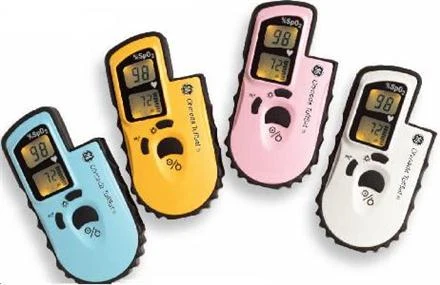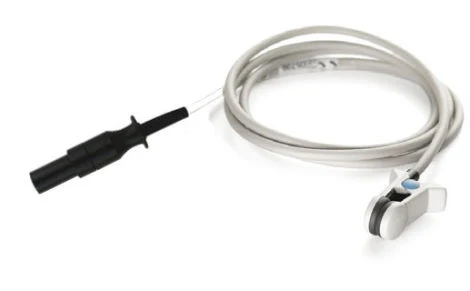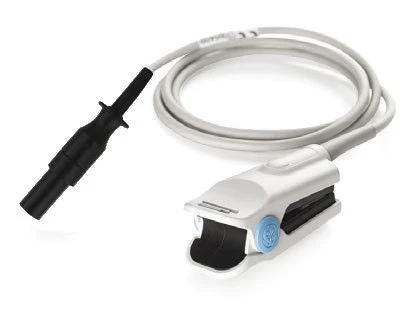Pulse Oximeters
What is a Pulse Oximeter?
A pulse oximeter is a medical device that indirectly monitors the oxygen saturation of a patient's blood (as opposed to measuring oxygen saturation directly through a blood sample) and changes in blood volume in the skin, producing a photoplethysmograph. It is often attached to a medical monitor so staff can see a patient's oxygenation at all times. Most monitors also display the heart rate. Portable, battery-operated pulse oximeters are also available for home blood-oxygen monitoring. The original oximeter was made by Millikan in the 1940s. The precursor to today's modern pulse oximeter was developed in 1972, by Aoyagi at Nihon Kohden using the ratio of red to infrared light absorption of pulsating components at the measuring site. It was commercialized by Biox in 1981. The device did not see wide adoption in the United States until the late 1980s.
Function
A blood-oxygen monitor displays the percentage of arterial hemoglobin in the oxyhemoglobin configuration. Acceptable normal ranges are from 95 to 100 percent, although values down to 90% are common. For a patient breathing room air, at not far above sea level, an estimate of arterial pO2 can be made from the blood-oxygen monitor SpO2 reading.
A pulse oximeter is a particularly convenient noninvasive measurement instrument. Typically it has a pair of small light-emitting diodes (LEDs) facing a photodiode through a translucent part of the patient's body, usually a fingertip or an earlobe. One LED is red, with wavelength of 660 nm, and the other is infrared, 905, 910, or 940 nm. Absorption at these wavelengths differs significantly between oxyhemoglobin and its deoxygenated form; therefore, the oxy/deoxyhemoglobin ratio can be calculated from the ratio of the absorption of the red and infrared light. The absorbance of oxyhemoglobin and deoxyhemoglobin is the same (isosbestic point) for the wavelengths of 590 and 805 nm; earlier oximeters used these wavelengths for correction for hemoglobin concentration.
The monitored signal bounces in time with the heart beat because the arterial blood vessels expand and contract with each heartbeat. By examining only the varying part of the absorption spectrum (essentially, subtracting minimum absorption from peak absorption), a monitor can ignore other tissues or nail polish, (though black nail polish tends to distort readings) and discern only the absorption caused by arterial blood. Thus, detecting a pulse is essential to the operation of a pulse oximeter and it will not function if there is none.
For any Pulse Oximeters not listed here, please do not hesitate to call or email!!
888-228-7564









